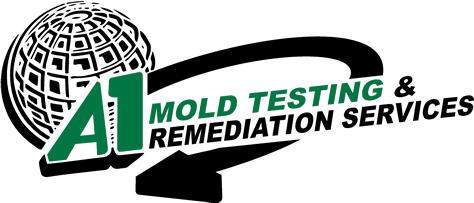The Hard Truth of Mold Remediation that No One Wants to Talk About
No one wants to deal with a mold problem.
It’s stressful. It’s time-consuming. It’s disruptive. It’s EMOTIONAL!
That’s why Dave Bayne, A1 Mold Remediation’s owner and general manager, isn’t just a manager — he’s also a part-time psychotherapist.
We’re only partially joking.
Mold just sucks.
It damages your belongings, your home, and your health.
Mold is a Potential Mental Health Problem
 But you don’t have to take our word for it. Mold is a serious health concern, according to
the Environmental Protection Agency, the Center for Disease Control, the Institute of Medicine of the U.S. National Academy of Sciences, the World Health Organization, and Health Canada.
But you don’t have to take our word for it. Mold is a serious health concern, according to
the Environmental Protection Agency, the Center for Disease Control, the Institute of Medicine of the U.S. National Academy of Sciences, the World Health Organization, and Health Canada.
Along the way, it can wreak havoc on your emotional well-being, too.
Mold causes immense stress on families:
- You worry about the safety of your own home.
- Your worry about your loved ones’ health.
- You even worry that the mold might harm your pets.
So, when Dave is breaking down his services for potential customers, he plays it straight. He offers hard truths, but he does it with empathy and kindness.
“Mold is a very emotional subject,” says Bayne. “No one wants mold in their homes. However, if your home suffers from a moisture problem and is not dried out properly, it will inevitably have a mold issue. It can be embarrassing for some to have mold in their home, somewhat like when you come to a stoplight and your brakes are squealing.”
Dave knows that your home – and your family – are your top priorities.
And he knows what happens if you try to put off the problem: often, the mold gets even worse. Take it from the Environmental Protection Agency – if you find a mold problem, act quickly.
Why is Mold So Stressful?
 Without further ado, here are a few truths about mold that homeowners fear and remediators hate to think about:
Without further ado, here are a few truths about mold that homeowners fear and remediators hate to think about:
- Mold remediation is sometimes simple and straightforward. But sometimes, it’s not.
- Mold (and more specifically) water problems can be difficult to pinpoint and fix.
- Water can drip or seep from hidden places, moving around a home in strange and unpredictable ways, causing mold far from the point of origin.
In short, mold remediation is a lot like peeling an onion. You start carefully pulling back the layers of a structure until you find the source of the problem.
Not everyone understands how to attack these challenges in a logical and cost-effective way.
That means you need a mold professional who:
- Has the experience and expertise to track down water intrusion quickly and without unnecessary property damage
- Understands that you want to minimize a mold removal project’s impact on your home life … and your bank account
- Wants to do everything possible to protect your family’s health
- Realizes that mold, to put it frankly, sucks. And that you want the problem solved as soon as possible so that you can get back to a healthy, normal life.
At A1 Mold Testing & Remediation, we know you never asked for a mold problem.
No one does.
Why You Shouldn’t Wait to Call Dave
Mold is the enemy.
A1 Mold Testing & Remediation’s Dave Bayne is your ally.
He’ll help you develop an attack plan for your mold problem.
- The longer you wait, the worse mold may become
- You may wind up with even more property damage
- Worst of all, you could experience additional mold exposure … and possible health effects
Mold is an ugly enemy. The United States military knows it and has plans in place to deal with mold. You should recognize that truth, too.
Mold typically follows immediately after a water problem , such as a leaky water heater or basement flooding. If you don’t quickly remove the water and then dry the structure, mold begins growing.
It’s common to see visible mold growth within 24-48 hours. You may see black clumps on a wall. Or perhaps you see strange fungus-like structures on furniture. Or you may not see it at all because it’s growing inside a wall cavity.
Mold’s Immediate Effects on Your Home
Once mold establishes itself, it may tough to remove without disassembling (a gentler term for “demolishing”) parts of your home.
Sometimes a mold colony’s growth stalls once a structure is totally dry. But then the dried pieces of the colony may break off and drift around the home.
All it takes then is a bit of water – or even higher-than-average humidity – and those spores and colonies began to grow again.
Drywall is a common mold target. Typically, the mold colony starts at the bottom of the wall, where water collects. The wooden lumber used in the frame of your house gets moldy, too.
At first, there may be just a few black spots. With the right conditions, though, the mold will quickly spread up, down, and all around the wall.
Sometimes the mold affects just a few inches or feet. In more severe cases, we’ve seen mold from floor to ceiling … and worse.
Don’t give mold more time to spread.
Give yourself some peace of mind. Protect your family.
Call or email A1 Mold Testing & Remediation and ask for Dave Bayne.
He’ll walk you through the realities of mold remediation. Those truths aren’t always fun – but dealing with them now means less expense and less heartache later.







